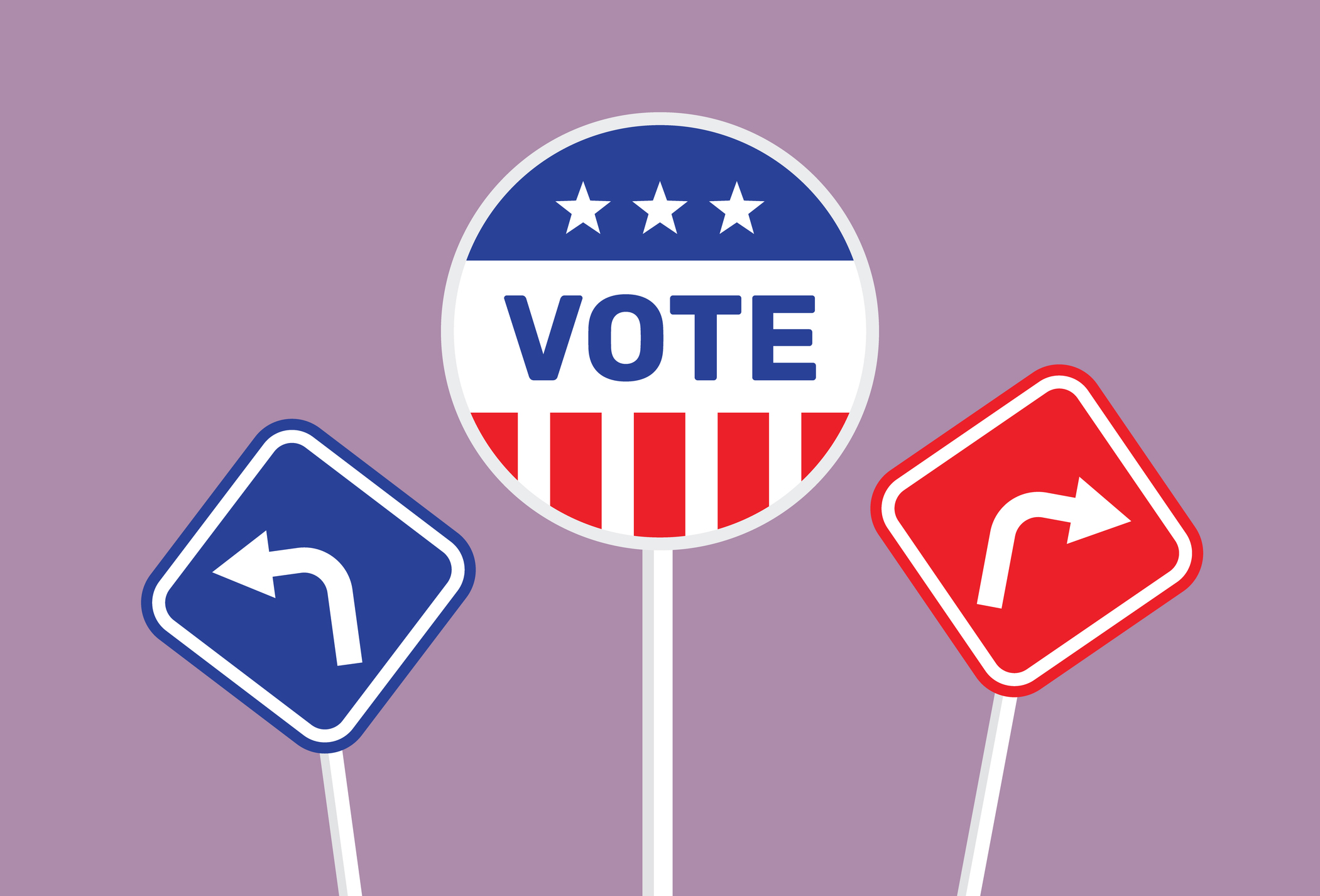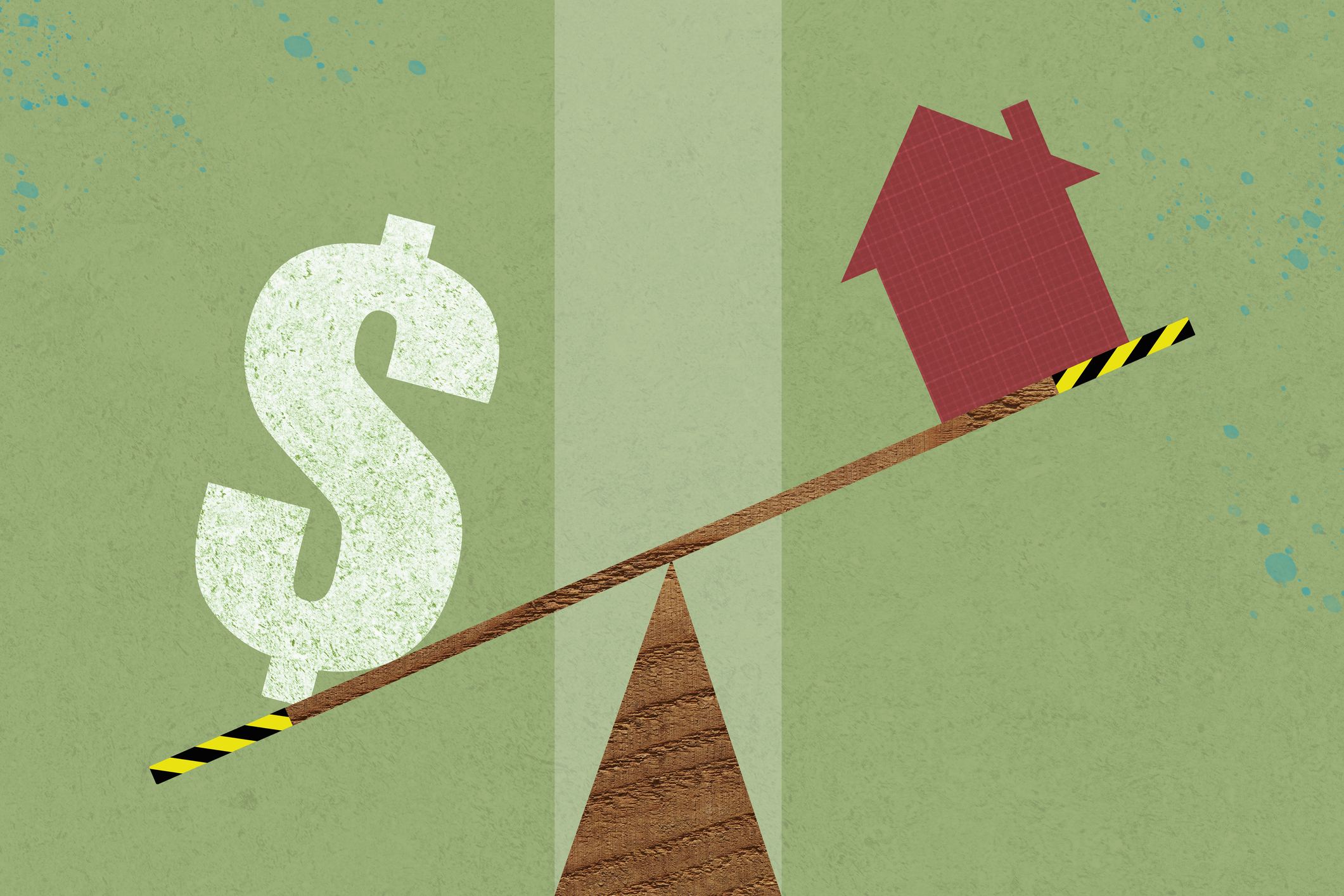Election 2024 Childcare Debate: Harris-Walz vs. Trump-Vance Plans
The VP debate between Sen. JD Vance and Gov. Tim Walz touched on issues involving childcare and family tax credits. Here’s what to know.


Vice presidential candidates Republican Sen. JD Vance of Ohio and Democratic Minnesota Gov. Tim Walz went head-to-head last night. The first and only VP debate between the two might be the last opportunity each ticket has to sway a national audience of voters.
Taxes are a pocketbook issue that has received attention throughout the campaign. But childcare and family tax breaks like the federal child tax credit (CTC), have been front and center, with good reason.
- Parents and guardians spend more of their income on childcare each year, and the situation has worsened since the pandemic. Data show that in many cases, the average cost of childcare is greater than the average rent. (More on that later.)
- There is no national paid family leave law in the U.S.
- Not to mention, the impending "tax cliff" of the Tax Cuts and Jobs Act (TCJA) next year could directly impact families, including those that benefit from the federal child tax credit unless Congress acts.
Debate last night
As expected, Walz, Harris’ running mate, reinforced their campaign’s focus on the middle class, including enhanced federal child tax credits, and support for affordable childcare and housing.
From just $107.88 $24.99 for Kiplinger Personal Finance
Be a smarter, better informed investor.

Sign up for Kiplinger’s Free Newsletters
Profit and prosper with the best of expert advice on investing, taxes, retirement, personal finance and more - straight to your e-mail.
Profit and prosper with the best of expert advice - straight to your e-mail.
"We'll just ask the wealthiest to pay their fair share," Walz explained. "When you do that, our system works best. More people are participating in it and folks have the things that they need."
Vance was asked about his proposal for a larger child tax credit and discussed how a potential Trump administration might address childcare costs through tariffs, as well as what he described as flexible family care options.
"President Trump is saying that when we bring in this additional revenue with higher economic growth, we're going to be able to provide paid family leave, childcare options that are viable and workable for a lot of American families," Vance explained.
Here’s more of what you need to know.
Child Tax Credit
Federal child tax credit expansion
Why the child tax credit is a key issue
The temporary CTC expansion under the TCJA expires at the end of 2025 if Congress doesn't take action. So, both presidential candidates are using it as an opportunity to carve out new tax reform.
The vice presidential debate highlighted areas where the Democratic and Republican candidates differ, and where they might surprisingly align.
Minnesota
Walz's success with the CTC in his home state
Notably, as governor of Minnesota, Walz created the largest state child tax credit in the nation. (Walz pointed out that an enhanced CTC in his state reduced child poverty by a third.)
- As of last year, eligible Minnesota families could receive up to $1,750 per qualifying child, with no limit on the number of children claimed.
For more information, see Kiplinger's report Minnesota Child Tax Credit Eligibility and Amount.
The Democratic ticket’s plan: Harris would expand the CTC
Harris’ child tax credit proposal aims to reinstate and make permanent the expanded federal child tax credit enacted during the pandemic.
- As Kiplinger reported, the measure would raise the CTC from $2,000 per child to $6,000 for newborns, $3,600 for children under 6, and $3,000 for children between the ages of 6 and 17.
- The credit would also be fully refundable, meaning those with little to no income would be eligible for the tax break.
The Republican ticket’s plan: Vance pledged to enhance the child tax credit
In a rare instance, both presidential tickets seem to agree on the need to enhance the federal CTC.
About a month ago, Trump’s vice presidential candidate JD Vance floated raising the child tax credit by 150% from its current $2,000 amount.
“I mean, look, I’d love to see a child tax credit that’s $5,000 per child,” the Republican senator told CBS’s Face the Nation. “But you, of course, have to work with Congress to see how possible and viable that is.”
- However, Vance’s idea isn't concrete.
- He has suggested that an expanded CTC should “apply to all American families,” and not feature a “massive cutoff” for lower-income households. (Currently, the tax credit phases out for single filers earning over $200,000 and married couples filing jointly that earn over $400,000.)
- Vance didn't expand on the proposal during the debate.
Childcare Shortage
Affordable childcare
Why childcare is an issue
Another crucial issue in this election debate is childcare. The U.S. Department of Health and Human Services indicates that childcare is considered affordable when it costs no more than 7% of household income.
However, parents across the country are spending 24% or more on average of their household income on child care each year, according to data from Care.com.
The childcare cliff that’s unfolded since the end of the pandemic has worsened access to affordable care. Some $24 billion in pandemic federal funding kept many childcare programs afloat. When that aid expired last year, it forced mass shutdowns in the industry.
The fallout affected as many as 70,000 childcare providers, The Century Foundation found, putting approximately 3.2 million children at risk of losing their childcare spots.
Here’s where the presidential candidates stand.
The Democratic ticket’s plan: Harris wants to cap childcare costs
Harris pledged to cap childcare costs at no more than 7% of working families’ incomes during an interview with the National Association of Black Journalists last month.
“We need to do better by our childcare providers and our health care providers in terms of ensuring that they receive the wages that they deserve based on the dignity of their work,” Harris told the NABJ.
The Harris campaign also advocates increasing pay for childcare providers.
"You can't expect the most important people in our lives to take care of our children or our parents, to get paid the least amount of money, Walz said during the debate, adding, "And we have to make it easier for folks to be able to get into that business and then to make sure that folks are able to pay for that."
Salary ranges for daycare workers generally fall between $22,000 and $43,000, with the average as of last year according to the Bureau of Labor Statistics being around $30,000 a year. The average hourly wage for daycare workers is around $14.
JD Vance childcare
The Republican ticket’s plan: Vance supports family babysitting
Sen. Vance has often expressed concern about declining birth rates in the U.S. Trump’s running mate has also criticized women in the Democratic Party for being “anti-family” and made disparaging and sexist remarks touting some as “childless cat ladies.”
JD Vance has leaned on having a family member help with childcare
"We want to promote choice in how we deliver family care and how we promote childcare because, look, it is unacceptable," Vance said during the debate, adding that the Republican party needs to be "pro-family in the fullest sense of the word."
During the campaign, Vance has suggested:
- Getting a family member, like a grandparent, aunt, or uncle to babysit can help “relieve some of the pressure” on spending on daycare.
- Supporting some policy to help one parent stay home with a child.
- Taxing people without children more than those with children. “We need to reward the things we think are good, and punish the things that we think are bad,” Vance told the Charlie Kirk show.
Trump favors tariffs to fund childcare
Meanwhile, Trump recently told business leaders that his plans to increase tariffs to 20% on all foreign imports would help address rising childcare costs.
“We’re going to be taking in trillions of dollars, and as much as child care is talked about as being expensive, it’s — relatively speaking — not very expensive, compared to the kind of numbers we’ll be taking in,” Trump told the Economic Club of New York in September.
However, during the debate, Walz noted that consumers pay the price for tariffs.
“You’re not going to pay for it with these tariffs,” Walz said. “So not only do [families] not get the money to pay for that (referring to childcare), they’re $4,000 in the hole."
For more information, see Kiplinger's report Will Trump's Tariffs Help or Hurt Consumers?
Paid family leave
A majority of U.S. workers don't have access to paid family leave. The debate moderators asked both VP candidates how much leave companies should be required to provide.
While neither candidate offered specifics, Gov. Walz voiced concern about the issue and reinforced that a potential Harris administration would prioritize paid family leave. (Worth noting: Starting in 2026, Minnesotans will have access to up to 20 weeks of paid family and medical leave benefits.)
Vance seemed to agree that there's a childcare crisis in America, and spoke broadly about using tariffs to generate funding for flexible "family care models."
Rising childcare costs need to be addressed
With the cost of childcare outpacing inflation, millions of families are concerned about their finances and access to affordable childcare.
The looming end of TCJA provisions also threatens to destabilize some, as the temporary expansion of the federal CTC, which lifted millions of children out of poverty, could revert to just $1,000 per qualifying child in 2026.
As the days tick closer to the election, less than 35 days away, the presidential candidates may share more concrete information supporting their policy proposals. These plans could have real impacts on your family.
Whether it's addressing wages for childcare providers or tax credits and deductions for families, stay tuned for more information before casting your vote.
Related Content:
Profit and prosper with the best of Kiplinger's advice on investing, taxes, retirement, personal finance and much more. Delivered daily. Enter your email in the box and click Sign Me Up.

Gabriella Cruz-Martínez is a finance journalist with 8 years of experience covering consumer debt, economic policy, and tax.
Gabriella’s work has also appeared in Yahoo Finance, Money Magazine, The Hyde Park Herald, and the Journal Gazette & Times-Courier.
As a reporter and journalist, she enjoys writing stories that empower people from diverse backgrounds about their finances, no matter their stage in life.
-
 Credit Cards That Actually Reward Your Loyalty
Credit Cards That Actually Reward Your LoyaltyIf you have bank or investment accounts with your credit card issuer, you may qualify for extra cash back, waived fees and other benefits.
-
 The 10 Most Valuable Vacation Destinations for Retirees in 2026
The 10 Most Valuable Vacation Destinations for Retirees in 2026Whether traveling within the U.S. or internationally, retirees can find a perfect blend of relaxation and excitement in these destinations, all while staying within budget.
-
 Standard Deduction 2026 Amounts Are Here
Standard Deduction 2026 Amounts Are HereTax Breaks What is the standard deduction for your filing status in 2026?
-
 Claiming the Standard Deduction? Here Are Five Tax Breaks for Retirement in 2025
Claiming the Standard Deduction? Here Are Five Tax Breaks for Retirement in 2025Tax Tips If you’re retired and filing taxes, these five tax credits and deductions could provide thousands in relief (if you qualify).
-
 Another IRS 1099-K Threshold Change to Know for Your 2025 Taxes
Another IRS 1099-K Threshold Change to Know for Your 2025 TaxesTax Law After years of uncertainty and changing requirements, the 1099-K reporting rules for 2025 are now set, and the thresholds have changed since last year.
-
 IRS 1099-K Threshold for 2025 Taxes Just Changed: What to Know Now
IRS 1099-K Threshold for 2025 Taxes Just Changed: What to Know NowTax Law After years of uncertainty and changing requirements, the 1099-K reporting rules for 2025 are now set, and the thresholds have changed since last year.
-
 Ohio Property Tax Shock: Why Your New Assessment Is So High (And What Comes Next)
Ohio Property Tax Shock: Why Your New Assessment Is So High (And What Comes Next)State Taxes Higher home valuations in Ohio have led to homeowner property tax relief. But is it enough?
-
 Health Insurance Tax Credits and the Government Shutdown: What to Know
Health Insurance Tax Credits and the Government Shutdown: What to KnowTax Credits Previous shutdowns have occurred for various reasons, including border wall funding. But this time, the standoff centers in part on health care and taxes.
-
 Florida Residents Could Soon Get Property Tax Relief
Florida Residents Could Soon Get Property Tax ReliefProperty Tax The push for a solution to end high property taxes could lead to significant tax cuts in the Sunshine State next year.
-
 New Tax Rules: Income the IRS Won’t Touch in 2025
New Tax Rules: Income the IRS Won’t Touch in 2025Income Taxes From financial gifts to Roth withdrawal rules, here’s what income stays tax-free under the new Trump 2025 tax bill, and some information on what’s changed.